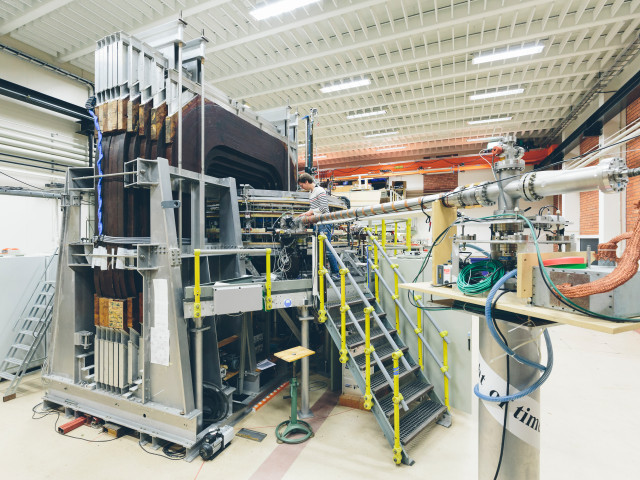Classical transport and diffusion, ballistic transport and conductance quantization, Landauer formalism and coherent transport, gauge invariant phase and Aharonov-Bhom effect, weak and strong localization, Coulomb blockade, Mesoscopic superconductors, decoherence of a quantum system in its environment. Nano-electronics, Nano-mechanics, experimental methods and demonstrations..
SK2700 Mesoscopic Physics 8.0 credits
This course has been discontinued.
Last planned examination: Autumn 2021
Decision to discontinue this course:
No information inserted
Content and learning outcomes
Course contents
Intended learning outcomes
The goal of this course is to communicate a basic understanding of electron transport in system that are “coherent” in the quantum mechanical sense. With this understanding you should be able to:
- Compare new the new concepts of nano-electronics with the present-day technique, and understand their fundamental limits.
- Use simple models to calculate the basic energy and length scales for mesoscopic phenomena which are physically relevant.
- Identify various basic device concepts in a variety of physics systems.
Literature and preparations
Specific prerequisites
Recommended prerequisites: Basic courses in electro-magnetism and quantum mechanics are required. Basic course in solid state physics (kittel level) is recommended.
Recommended prerequisites
Equipment
Literature
Supriyo Datta, Electron Transport in Mesoscopic Systems, Cambridge University Press.
Diverse articles
Examination and completion
If the course is discontinued, students may request to be examined during the following two academic years.
Grading scale
Examination
- INL1 - Assignments, 6.0 credits, grading scale: A, B, C, D, E, FX, F
- LAB1 - Laboratory Work, 2.0 credits, grading scale: P, F
Based on recommendation from KTH’s coordinator for disabilities, the examiner will decide how to adapt an examination for students with documented disability.
The examiner may apply another examination format when re-examining individual students.
Other requirements for final grade
The examination will be through home project assignments (INL1; 6 credits, grading scale A-F) and lab exercises (LAB1; 2 credits, grading scale P/F).
Opportunity to complete the requirements via supplementary examination
Opportunity to raise an approved grade via renewed examination
Examiner
Ethical approach
- All members of a group are responsible for the group's work.
- In any assessment, every student shall honestly disclose any help received and sources used.
- In an oral assessment, every student shall be able to present and answer questions about the entire assignment and solution.
Further information
Course room in Canvas
Offered by
Main field of study
Education cycle
Add-on studies
SK2710 Spin Electronics